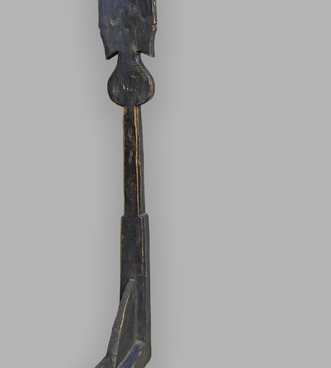The exhibition of the Polyarny Museum of History and Local Lore presents a kibas — a sinker for fishing nets. This item belongs to the material culture of the Pomors, a people living mainly on the coasts of the White and the Barents Seas.
The Pomors were mainly engaged in fishing, hunting and navigation. They were of Christian faith. Saint Peter is considered the patron saint of fishermen, which is why the spring fishing season ends and the summer fishing season begins on St. Peter’s Day, June 29 (July 12). On this day, Pomory fishermen began weaving new sinkers called kibas from birch bark for their nets. Pomors believed that kibas, woven in the form of a “cross in a circle”, were better and more reliable than other types of sinkers.
Making a kibas is more difficult than just sewing a large pebble for a sinker into birch bark or making a load of baked clay with a hole. The stone, located in the center of the kibas, is braided with a birch bark ribbon with a simple (through one stick) straight weave. Birch bark is attached in four places to a spruce root or juniper, bent in several rows in the shape of a circle. The Kibas consists of a stone, some birch bark and spruce root. It was probably made by hand in the early 20th century in the village of Umba.
But for the Pomors, kibas is not just a sinker, it is also a talisman, an analogue of a Russian horseshoe for good luck. The symbol of the cross is enclosed in the kibas, it was believed to bring good luck to its owner which is why it was often hung on the wall or at the entrance to the fishing hut. The Pomors did not throw away their old kibas from fishing nets, they kept them at the fishing site “for good luck”. To present somebody a kibas means to wish them a long and happy life. If the kibas were to be stolen, the thief would gain all the good fortune encased inside it. There is a custom among the Pomors of stealing kibas from the net of a lucky neighbor.
Scientists believe that the
word “kibas” is very ancient, it probably means just a stone. In particular, it
is consonant with the Karelian, Vepsian and Finnish common word “kiwi” — stone.
An interesting fact is that in Greek “Peter” also means stone, and it was on
Peter’s Day (the day of the Holy Apostles Peter and Paul) that the Pomors would
weave new kibas.



